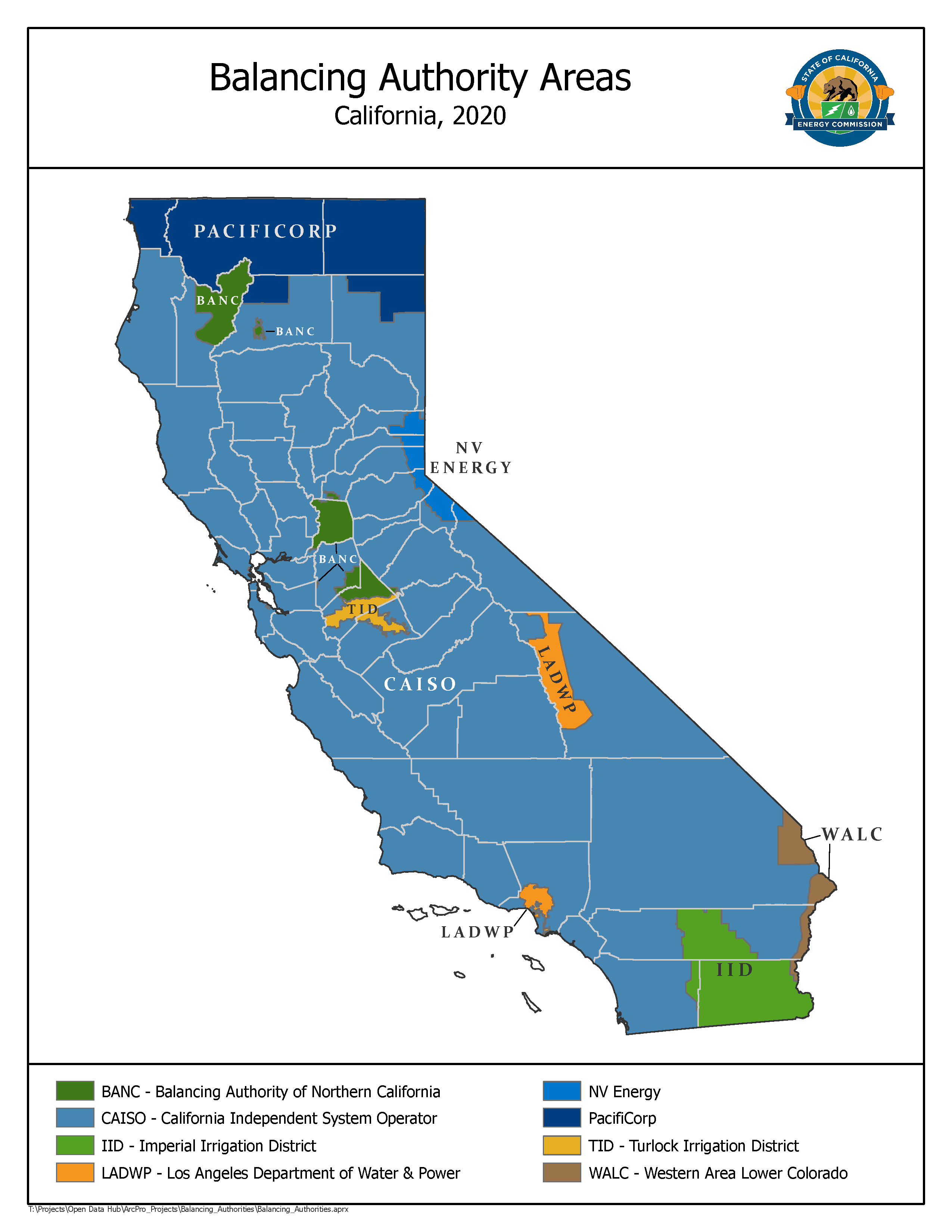An integrated, reliable, and resilient transmission system is foundational to achieving California’s clean energy goals. Modernizing California’s transmission system involves the state’s primary energy institutions and transmission owners. The 2022 Memorandum of Understanding between the California Independent System Operator (California ISO), the California Public Utilities Commission (CPUC), and the California Energy Commission (CEC) ensures the planning and implementation of new transmission and resources are linked, synchronized and transparent.
The California Independent System Operator (California ISO) manages the flow of electricity across high-voltage, long-distance power lines that serve 80 percent of California’s electricity needs, supported by a competitive energy market. California ISO identifies and approves investments in new transmission lines and system upgrades, and manages an interconnection queue to connect new energy resources to the grid, providing open and non-discriminatory access to the bulk of the state’s wholesale transmission system.
The California Public Utilities Commission (CPUC) regulates investor-owned electrical utilities, overseeing the operation, maintenance and expansion of their transmission and distribution infrastructure. The CPUC also approves the necessary certifications and permits for construction of high-voltage transmission lines (above 50 kiloVolts) proposed by transmission owners and independent developers. The CPUC also mandates procurement of clean energy resources to ensure that retail sellers within IOU service territory are providing customers with clean energy consistent with statewide greenhouse gas emission reduction goals.
The California Energy Commission (CEC) serves as the statewide energy policy and planning agency charged with ensuring a reliable and affordable energy supply. Its responsibilities include forecasting energy demand, assessing trends in energy infrastructure, and overseeing land-use and environmental planning. The CEC also authorizes permits for clean, renewable, and thermal generation facilities 50 MW or greater, including the electrical lines connecting new energy resources to their first point of interconnection with the transmission system.
Transmission Owners build, own, operate and maintain transmission infrastructure. The majority of California transmission infrastructure is owned by the three large investor-owned utilities -- Pacific Gas and Electric, Southern California Edison, and San Diego Gas & Electric -- while the remaining transmission is owned by municipal utilities, joint powers authorities, independent transmission developers and the Western Area Power Administration.
Managing Electricity Flows on the Transmission System
Like water lines carrying water throughout the state, California’s electricity transmission system is constantly moving electrons from power sources – like solar, wind, geothermal and natural gas power plants – to homes and businesses across California. The transmission system is managed by various Balancing Authorities, which are pivotal in balancing electricity supply and demand in real-time across their designated geographic areas.
Balancing Authorities (BA) control the energy resource output and transmission of electricity throughout their own territory, and between neighboring BAs. Every hour of every day, BAs carefully monitor and operate the system to ensure the energy resource output, transmission, and distribution systems are all working in sync and reliably to meet Californians’ energy needs. BA coordination is important to maintaining grid reliability, particularly when the state faces extreme events.
The California ISO is the BA or electric grid operator for most of California, serving 80 percent of the state’s electricity needs for roughly 30 million people. It includes the service territories of California’s three large investor-owned utilities - Pacific Gas and Electric, Southern California Edison, and San Diego Gas & Electric, and several municipal utilities. The California ISO performs its functions under a tariff approved by the Federal Energy Regulatory Commission (FERC) and reliability standards set by the Western Electricity Coordinating Council (WECC) and the North American Electric Reliability Corporation (NERC).
The remaining 20 percent of the state’s electric grid is operated by BA territories served by publicly owned utilities that are responsible for operations within their own service territories throughout the state.
FERC is an independent agency that regulates the interstate transmission of electricity, natural gas, and oil. The FERC also has jurisdiction over rates, terms, and conditions of transmission service through interstate commerce. The California ISO is regulated by FERC. The CPUC advocates for just and reasonable transmission rates at FERC on behalf of all California ratepayers.

